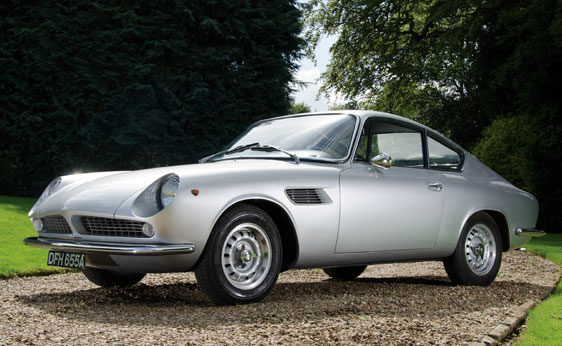For a long, very long time, Enzo Ferrari argued that a number of twelve cylinders was the minimum standard for the cars that could bear his name. Still, the Italian car grandmaster revised his starting point. Ferrari wanted to generate a stable revenue stream to support its core business on a permanent basis. Ferrari was looking for additional finances for the racing activities of the Italians. It forced the Italians to develop a car with a smaller displacement. That step was the precursor for the ASA brand, which existed from 1962 to 1967.
The finished engine, chassis and prototype - named Ferrarina - was exhibited at the Turin Motor Show. The carriage was drawn by none other than Giorgetto Giugiaro, employed by Bertone. For reasons unknown to this day, Ferrari withdrew financial support for the quattro-cilindri project, but sought buyers for the project. At that moment the drivers Gerino Gerini, Lorenzo Bandini and Giancarlo Baghetti came into the picture. They made contact with father and son De Nora. They had made a fortune from their petrochemical business. Thanks to their support, the “Ferrarina” was put into production.
Ferrarina becomes ASA 1000 GT
The ASA 1000 GT, that was the name of the Ferrarina when it was shown to the general public in 1962 in Turin. In 1964 the beautifully designed ASA finally went into production. He showed strong similarity with the prototype of Giorgetto Giugiaro. The engine of the 1000 GT was derived from the 3.0 liter engine from the Ferrari 250 GTO, developed by Gioacchino Colombo. Giotto Bizzarrini was the inventor of the tube chassis of the 1000 GT. The later car manufacturer had been employed by Ferrari for many years.
Jewel of an engine
The power source - specially designed for the Ferrarina - was a 1032 cc four-cylinder engine with one overhead camshaft. The jewel put 97 HP on the crankshaft. That was an impressive cylinder / horsepower ratio. The Bizzarrini engine was ventilated by two twin Weber carburettors. The "driver" had a manual four-speed gearbox plus overdrive at his disposal. That combination was enough to make the ASA, weighing only 780 kilos, accelerate to a top of 190 kilometers per hour. To curb that performance, the ASA 1000 GT was equipped with four disc brakes all around.
Unbelievably beautifully finished
The lucky driver of the ASA 1000 GT was allowed to wallow in an unimaginably beautiful interior, which was again finished in that typical Italian way. Beautiful detailing, a handbrake on the left of the tunnel next to the pedal section, and beautiful materials really finished the ASA. Unfortunately, the beautiful coupé - perhaps one of the most beautiful creations of the sixties - was too expensive. That is why the production number has always remained low. There is much uncertainty about the number of ASAs produced between 1964 and 1967. Some sources state a number of 75 pieces, others report a number of 146 pieces. Incidentally, there was also a Spyder variant of the ASA 1000 GT. This equally beautiful creation was built 23 times and deviated in construction because Bizzarrini used different tubes for the chassis.



I have never understood the importance of many cylinders. After I once had a Daihatsu Cuore as a loan car and had a test drive with a Smart Roadster, my motto is: the fewer cylinders, the greater the fun. Even when I once had a BMW 520 (E39) on loan (well) afterwards, I am not easily impressed by everything that goes above 4 cylinders. With fewer cylinders one automatically becomes more creative to make something out of it and I am very impressed by the specific power of this ASA. Genetically related to Honda's S500-S800 range.
There is an ASA coupé for sale at Veni Vidi Vici in Castricum. Is not a 1000 GT but very rare.
Ferrari had already developed a prototype for a small 1960-cylinder sports car in 4. The Pininfarina Ferrarina 850 GT. The chassis was from the Fiat 1200 and was equipped with an 850 cc engine. The development of the ASA 1000 GT was thus a successor in the Ferrari 4-cylinder category.